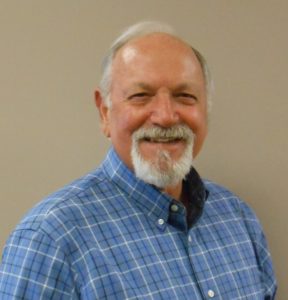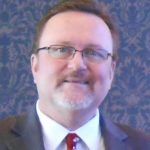August 2017
Honoring Yesterday – Protecting Tomorrow
Vol. 48, No. 8
What’s Inside
- President’s Message
- General Membership Meeting
- Cal Fire Smart Phone App
- Recent Events
- RoboCall Epidemic
- Long-Term Care Part 2
- Union-Tribune Commentary
- New RESDC Board Member
- 401(k) Is No Pension Plan
- Why Was My Dental Claim Denied?
- Scholarship Recipients
- Understanding Medicare Basics
- Save the Date – Coming Home
- Managing Medications
- Welcome New Members
- In Memoriam
August Calendar of Events
Fri., Aug 4
Deadline for Nominations to RESDC Board of Directors
Thurs., Aug 10, 9:30am
RESDC Board of Directors Retreat
8825 Aero Drive, Suite 205
Tues., Aug 15, 9:30am
RESDC General Membership Meeting
1111 Bay Blvd., Chula Vista
Thurs., Aug 17, 9:00am
SDCERA Board of Retirement Meeting
2275 Rio Bonito Way, Suite 200
![]() View the NETWORK
View the NETWORK
as a printable PDF
Are you on social media?
Stay connected with us!
![]()
![]()
![]()
General Membership Meeting
Chula Vista | August 15th
More Information →
President’s Message
By John J. McTighe
 Last month I discussed travel insurance with a focus on how to shop for a policy that fits your needs. This month, I will go into a little more detail about the difference between cancellation for terrorism and cancellation for any reason. In the eyes of the travel insurers, these are two very different things. The former is a somewhat standard provision of many policies and provides the traveler with reimbursement of their insured costs if all the proper steps are taken to comply with the insurer’s requirements. It’s important the traveler understand how the insurer defines a terrorist incident. In most cases, the insurer will require that a terrorist incident, regardless of where it takes place in the world, is defined by the U.S. State Department as an act of terrorism. So, something you might think of as a terrorist incident, might not fit the State Department’s definition.
Last month I discussed travel insurance with a focus on how to shop for a policy that fits your needs. This month, I will go into a little more detail about the difference between cancellation for terrorism and cancellation for any reason. In the eyes of the travel insurers, these are two very different things. The former is a somewhat standard provision of many policies and provides the traveler with reimbursement of their insured costs if all the proper steps are taken to comply with the insurer’s requirements. It’s important the traveler understand how the insurer defines a terrorist incident. In most cases, the insurer will require that a terrorist incident, regardless of where it takes place in the world, is defined by the U.S. State Department as an act of terrorism. So, something you might think of as a terrorist incident, might not fit the State Department’s definition.
If you are not able to cancel your trip under the insurer’s definition of terrorism, but still don’t want to take the chance of traveling to a location, the “Cancel For Any Reason Insurance” comes into play. As I noted last month, except in very rare instances, that coverage is optional, requires an additional premium, and provides for only 50% to 75% reimbursement of the insured costs you have expended in advance of cancellation.
“Cancel For Any Reason Insurance” typically requires that you cancel at least 48 hours before your scheduled departure. Once again, it is important to note that this coverage is in addition to the standard trip cancellation provisions included in the base insurance policy. In other words, if you purchase a plan that covers terrorist activities in a destination city, and an event takes place meeting that definition within the specified time frame of your policy, you will be able to get a full refund. However, if no specific event has taken place, but you feel nervous about traveling to a particular city and you choose to cancel your trip under the “Cancel For Any Reason” coverage, you will only be able to recover the amount that your policy covers, again typically between 50% and 75%.
Always make sure you read the fine print of any travel insurance policy before you purchase it. Policies vary and the definitions used by one insurer won’t necessarily apply to another. Since most insurance companies offer a range of coverage from basic to deluxe, it’s important to read and understand the specifics of the particular coverage you are planning to buy. Hopefully, you’ve found these tips on travel insurance useful and will be able to benefit from them in the future.
The San Diego Union-Tribune recently published a commentary concerning the need to increase retirement security, including through programs such as California’s proposed Secure Choice legislation. I jointly authored this commentary with Jim Baross, President of the City of San Diego Retired Employees’ Association. You’ll find that reprinted in its entirety on Page 4 of this NETWORK, “Lawmakers Should Support Plan To Give Americans Retirement Security.” This is a product of your RESDC representatives working with other local public employee retirement organizations advocating for retirement security. We believe that the more prepared all workers are for retirement, the more secure we can be in our retirement. I hope by reading the commentary you’ll feel better equipped to discuss these issues with your friends and family.
Chula Vista General Membership Meeting
 WHEN: Tuesday, August 15, 2017.
WHEN: Tuesday, August 15, 2017.
Light refreshments available at 9:30 a.m. Meeting begins at 10:00 a.m.
NEW LOCATION: South County Career Center, 1111 Bay Blvd., Cabrillo Room, Chula Vista
PROGRAM: Southern Caregivers Resource Center and Alzheimer’s San Diego will present an overview of their programs and services.
DIRECTIONS: I-5 South. Take Exit 6 for Palomar St. Turn right on Palomar St. Career Center on Right.
Planning to attend? RSVP requested but not required. Click here for more information and to register online, or call (619) 688-9229.
Cal Fire Announces a New Smart Phone App
 Being ready for wildfires has never been easier than with CAL FIRE’s new Ready for Wildfire app. This new tool puts a whole library of step-by-step checklists in the palm of the user’s hand.
Being ready for wildfires has never been easier than with CAL FIRE’s new Ready for Wildfire app. This new tool puts a whole library of step-by-step checklists in the palm of the user’s hand.
It allows homeowners to track their progress while creating defensible space, hardening their homes with fire-resistant construction, assembling an emergency supply kit and creating a family communication and evacuation plan. The Ready for Wildfire app also provides critical wildfire alerts. Users can sign up for customized alerts that will send a text or push notification to their device when a CAL FIRE is responding or assisting to a wildfire in their area.
Users can also set up alerts for single counties, multiple counties, or statewide. If a user travels or enjoys recreating in forested areas, CAL FIRE has that covered, too! The app lets users enable an alert system to notify them if a wildfire is reported within 30 miles of their device.
To download the app, visit the App Store or the Google Play Store – search for CAL FIRE and install. You are now on your way to becoming Ready for Wildfire.
For more resources visit www.ReadyForWildfire.org or www.ReadySanDiego.org.
Read the whole story in East County Magazine: http://www.eastcountymagazine.org/cal-fire-launches-new-ready-wildfire-app.
Recent Events
- The San Diego County Board of Supervisors unanimously approved a $5.78 billion budget for the fiscal year which started July 1st. The spending plan is $94 million higher than what was originally proposed two months ago. The appropriations include: $81.5 million for pension obligation bond payments, $40.1 million for road maintenance, a $28 million advance payment for future street improvements, and $25 million to create an investment pool to assist in addressing the affordable housing shortage.
- As a recognized Live Well San Diego partner, RESDC was excited to host a resource booth at the recent Live Well San Diego 5k. The annual event held on July 30th at the County Administrative Center brought thousands of San Diegans together for a run/walk and an interactive, family-friendly Discovery Expo in support of a healthy, safe, and thriving San Diego County.
The Robocall Epidemic
By Stan Coombs
 Most of us are tempted to applaud somewhere deep inside ourselves, when folks we think deserve it get their comeuppance. Must admit it happened to me last month when we talked about Martin Shkreli’s price gouging with the drug, Daraprim, and his unrelated indictment. And it’s happened again.
Most of us are tempted to applaud somewhere deep inside ourselves, when folks we think deserve it get their comeuppance. Must admit it happened to me last month when we talked about Martin Shkreli’s price gouging with the drug, Daraprim, and his unrelated indictment. And it’s happened again.
According to National Public Radio (NPR) and other major news sources, the Federal Communications Commission (FCC) has fined Adrian Abramovich, head of Marketing Strategy Leaders, $120 million for allegedly violating the Truth in Caller ID Act, by making almost 97 million prerecorded, autodialed phone calls over a two year period, and disrupting an emergency medical paging service in the process. The FCC says the fine is the largest they’ve proposed. Apparently, Abramovich has 30 days to respond.
The Truth in Caller ID Act, and other FCC and FTC (Federal Trade Commission) rules, generally prohibit prerecorded or autodialed calls, texts to individuals without their prior consent, telemarketing calls to emergency lines, and the deliberate falsification of caller ID information with the intent to harm or defraud.
Abramovich’s Florida-based operation, Marketing Strategy Leaders, is accused of auto-dialing U.S. and Canadian phone numbers randomly, which calls showed up falsified on recipient’s phone displays, or “spoofed,” as originating within local telephone code areas, and including the first three numbers of the recipient’s phone number.
A recording would then encourage call recipients to “Press 1 to learn more” about vacation deals available from prominent travel companies, whereupon they would be transferred to call centers in Mexico for pitches about supposedly “discounted vacation packages” unrelated to the travel companies mentioned, according to NPR. Consumers, many elderly, spent thousands on the alleged misrepresented vacations.
Aside from any fraudulent intent, is there anything more annoying than the current deluge of unwanted, machine-initiated telephone calls?
The numbers reported for Abramovich’s claimed indiscretions are huge, but how prolific are these antics? Enter YouMail, a self-described “provider of intelligent, cloud-based telecommunications services.” And, a warning here; YouMail sells answering services that “detect robocall patterns,” and “tricks those callers into thinking that the subscriber’s number has been disconnected.”
But, YouMail also provides a very helpful (and free) monthly report, tracking robocall volumes across the U.S. They say that Americans were “besieged” by 29 billion robocalls during 2016 alone! That’s roughly 79.5 million robocalls daily, or 920 robocalls per second. And, as most of us are likely to believe, it’s about 126 robocalls for every American man, women and child! The 15 most active robocalling phone numbers were reported to belong to debt collectors for retailers, banks, phone companies and cable companies.
Earlier, in 2016, YouMail listed the “50 Most Robocalled Cities in America,” citing that year’s April figures. Washington DC was listed 50th, with 15.2 million robocalls, our own San Diego was listed 15th, with 26.3 million robocalls, and Atlanta was listed in first place, with 97.7 million robocalls that month! Perhaps most alarming, in May 2016 YouMail reported that this phenomenon had increased in volume by 50% over the previous year.
Rules exist, but differ between calls to landlines and wireless. Online, the FCC reports: (1) all telephone solicitation calls to homes must include the caller’s name, on whose behalf the call’s being made, how that person can be contacted, and are prohibited before 8:00 a.m. and after 9:00 p.m.; (2) all non-emergency, telemarketing and informational robocalls to wireless phones require prior consent – robocalls defined as unsolicited or prerecorded calls or texts to home phones or wireless numbers; (3) consumers can retract their permission in any reasonable way, and cannot be required to do so in writing; (4) commercial relationships do not constitute consent to be robocalled; (5) consent to robocalls cannot be a condition of sale or commercial relationships; (6) robocallers are restricted to calling wrong numbers only once; and, (7) legitimate urgent calls for health, fraud alerts, polling, school closings, flight information, market research, and calls from non-profit groups are not restricted.
Does the “Do Not Call Registry” help? Yes! It keeps the legitimate guys from calling, making it worthwhile to list your phone. Call toll-free from the phone to be registered, to (888) 382-1222, or travel the internet to https://www.donotcall.gov. Your registration should take one day to show up on the list available to telemarketers, can take 31 days to be effective, doesn’t expire, and, unfortunately, won’t stop all calls. Some people break rules!
In the midst of all this, “NEWSFACTOR,” a publication providing “news and information for technology purchasers,” reports that the FCC just finished a public comment period on a proposed change to Telephone Consumer Protection Act rules. That would allow something called “ringless voicemail,” allowing telemarketing and debt collection message delivery without the recipient phone ringing, possibly overwhelming consumers’ voicemail boxes (!)
SDCERA reports retirement system net assets increased $184.3 million during May, bringing the increase in net position to $1.1 billion, and total net assets to $11.4 billion. Retirement funds totals vary with investment market cycles, and public retirement systems are long-term organizations with time to address those variations.
Long-Term Care Part 2 – Planning Ahead After Age 65
By Mark Nanzer, Executive Director
 According to a recent poll conducted by the Associated Press-National Opinion Research Center for Public Affairs Research, 56% of older Americans want Medicare to cover long-term care costs. Currently, Medicare and Medicaid Services will only provide coverage for a specific length of time, or short-term care.
According to a recent poll conducted by the Associated Press-National Opinion Research Center for Public Affairs Research, 56% of older Americans want Medicare to cover long-term care costs. Currently, Medicare and Medicaid Services will only provide coverage for a specific length of time, or short-term care.
With the future of Medicare being hotly debated at the federal level, if you are one of those in the 56% who want Medicare to pay for long-term care costs, it’s important to plan ahead for yourself. The U.S. Department of Health & Human Services estimates that 70% of people who reach age 65 can expect to use some form of it during their lifetimes.
Many health-related issues create the need for long-term care: chronic illness, advanced age, accidents, stroke or Alzheimer’s disease. If one of these causes you to lose the ability to independently perform at least two activities of daily living (such as eating, dressing, or bathing), you are likely a candidate for long-term care assistance.
The national average annual cost for a private room in a nursing home is $97,612, according to a 2014 Lincoln Financial Group study, and $50,944 for a one-bedroom unit in an assisted-living facility. Therefore, a prolonged long-term care event could wipe out retirement savings well before death.
As I explained in Part 1 last month, it’s important that you be informed and plan ahead. Thanks to my friends at the U.S. Department of Health and Human Services, Administration on Aging who offer a great website: www.longtermcare.gov with multiple tools to help accomplish both what to consider and how best to plan.
Be Informed
Planning for the possibility of long-term care gives you time to learn about services in your community and what they cost. It also allows you to make important decisions while you are still able.
Housing Decisions
When thinking about long-term care, it is important to consider where you will live as you age and how your place of residence can best support your needs if you can no longer fully care for yourself. Most people prefer to stay in their own home for as long as possible. When planning to receive long-term care in your home, there are many things to consider including:
- The condition of your home;
- Whether your home can be modified, if necessary, to accommodate a wheelchair or other devices/equipment;
- The availability of long-term care services in your area, such as adult day care or nearby medical facilities;
- How “age-friendly” your community is. Does it offer public transportation, home delivered meals and other needed services?
Decisions About Your Health
Begin by thinking about what would happen if you became seriously ill or disabled. Talk with your family and friends about who would provide care if you needed help for a long time.
You might delay or prevent the need for long-term care by staying healthy and independent. Talk to your doctor about your medical and family history and lifestyle. He or she may suggest actions you can take to improve your health.
Healthy eating, regular physical activity, not smoking, and limited drinking of alcohol can help you stay healthy. So can an active social life, a safe home, and regular health care.
Legal Decisions – Getting Expert Advice
Lawyers and other professionals can help you create legal documents to ensure that your health care wishes are expressed. These experts understand state laws and how changes, such as a divorce, a move from your home, or death in the family, affect the way documents are prepared and maintained.
Be sure to discuss your preferences and give copies of your legal documents to family members, your health care proxy, and your doctor. It’s important to review documents regularly and update them as needed.
Financial Decisions
Financial planning is another important part of long-term care planning. Government health insurance programs, including Medicare and Medicaid, pay for some long-term care services but not others. Most people do not have enough money to pay for all their long-term care needs, especially if those needs are extensive or last a long time.
Think about your financial resources and how you feel about using them to pay for long-term care. These resources may include:
- Your pension or other retirement fund;
- Social Security;
- Personal savings;
- Income from stocks and bonds;
- Your home is another type of asset that could be used if needed.
It’s a good idea to review your insurance coverage, too. Many health insurance plans provide little, if any, coverage for long-term care. Review any private health insurance, Medicare, and Medigap policies to learn exactly what is covered and what is not.
Things You Can Do
- Obtain an advanced care directive;
- Consider home modifications;
- Consider different types of facilities;
- Make a plan for how you will pay for services:
- Costs of care;
- What is covered by health and disability insurance;
- Using life insurance to pay for long-term care.
San Diego Union-Tribune Commentary
In their June 23rd edition, the San Diego Union-Tribune published the following commentary co-authored by RESDC President John McTighe and City of San Diego Retired Employees Association President Jim Baross. A link to the article is found here:
http://www.sandiegouniontribune.com/opinion/commentary/sd-utbg-retirement-security-california-20170623-story.html
Lawmakers Should Support Plan To Give Americans Retirement Security
By John J. McTighe & Jim Baross
A substantial majority of Americans are worried about their chances of achieving a secure retirement, and they also feel the nation’s elected leaders cannot relate to the challenges they face in preparing for life after work.
A recent national poll conducted by the National Institute on Retirement Security showed strong bipartisan, grass-roots concern about retirement security. It found that 78% of Democrats and 76% of Republicans responding were concerned about economic conditions affecting their ability to achieve a secure retirement. There’s no partisan divide on this one.
And when asked if they agreed or disagreed with the statement that America is facing a retirement crisis, 88% agreed. Similarly, 85% of those surveyed (88% of Republicans) agreed with the statement that, “Leaders in Washington do not understand how hard it is to prepare for retirement.”
Why are people so anxious? There was a time when pensions were a common benefit in private sector employment. They guaranteed a comfortable retirement.
Now pensions in the private sector are a rarity. They’ve been replaced, in part, by 401(k) investment accounts, but as the creators of the 401(k) have repeatedly stated, they were designed to supplement pensions not replace them.
These savings vehicles typically come with high costs of up to 2% or more, which sap earnings; and when the recent recession happened, many people raided their own 401(k)s, leaving them with little to nothing for retirement. So there is good reason for those relying on these deferred savings accounts to be concerned.
A few states, including California, are trying to assist a huge segment of private sector workers who currently have no access to a retirement savings plan. The idea is to create a defined contribution retirement system in which employees would be enrolled by default, but could opt out. Under California’s Secure Choice plan, 3% will be withheld from paychecks, unless employees decline or wish to contribute a different amount, with no contribution by employers and no liability for taxpayers. The funds will be conservatively invested, with fees to participants capped at 1% of total investments.
Even though these proposals are very modest in terms of providing retirement income, they are better than nothing and allow workers to plan for a more independent and self-sufficient future.
Unfortunately, those out of touch federal leaders in Congress and the Trump administration have undermined these state-based proposals by revoking a regulation making it easier for states to offer defined contribution benefits to private sector workers. They did so at the behest of business groups and Wall Street interests, who make lots of money off 401(k) fees.
There has been much in the way of negative publicity about pensions, so a response to one of the survey questions might surprise many. Of those polled, 85% agreed with the statement that, “I believe that all workers should have access to a pension plan so they can be independent and self-reliant.” And 75% said that state retirement plans aimed at private sector workers are a good idea.
The good news is that California’s Secure Choice plan is moving forward, despite the roadblocks put in place by Washington. Its leaders have announced that they plan to have the system phase in beginning in 2019. Will they be challenged? Probably.
We believe that all working Americans deserve and should have retirement security. We’d encourage everyone to review California’s Secure Choice program and to ask their representatives to support it as well.
Employer-based private sector pensions have slowly faded away, with no reliable replacement. Tens of millions of Americans are looking at an uncertain future as a result. It’s time to insist upon solutions to make sure that everyone is secure in their retirement.
For more information on Secure Choice, go to www.treasurer.ca.gov/scib/.
McTighe is president of Retired Employees of San Diego County. Baross is president of City of San Diego Retired Employees’ Association
Minor formatting edits were made for this publication.
Introducing RESDC’s New Board Director Merrill Roach
 RESDC is excited to welcome our newest Board Director, Merrill Roach. Recently retired from the County, Merrill has a rich history of public service. From 1988 to 1998 he worked for both Mental Health Services and Alcohol and Drug Services as a Budget Analyst. From 1998 to 2016 he worked at San Diego County Employees Retirement Association (SDCERA) as an Investment Analyst. Merrill’s experience and understanding of the SDCERA investment portfolio will make him a great asset to the RESDC Board. Please join us in welcoming Merrill. Be sure to introduce yourself when you see Merrill at one of our upcoming events. Merrill is slated to be ratified at the August General Membership Meeting.
RESDC is excited to welcome our newest Board Director, Merrill Roach. Recently retired from the County, Merrill has a rich history of public service. From 1988 to 1998 he worked for both Mental Health Services and Alcohol and Drug Services as a Budget Analyst. From 1998 to 2016 he worked at San Diego County Employees Retirement Association (SDCERA) as an Investment Analyst. Merrill’s experience and understanding of the SDCERA investment portfolio will make him a great asset to the RESDC Board. Please join us in welcoming Merrill. Be sure to introduce yourself when you see Merrill at one of our upcoming events. Merrill is slated to be ratified at the August General Membership Meeting.
Pension Facts
401(k) Savings Is No Pension Plan
Pension Facts at a Glance
70,000
Number of unnecessary pages of member documents that SDCERA will avoid scanning each year as a result of process improvements identified by Benefits Division Managers Zack Sickels and Diwata Brown. Kudos are in order.
By Chris Heiserman, Director
 Public pension critics claim defined benefit (DB) retirement plans are too expensive for taxpayers. They argue that instead of traditional pensions, government workers should get 401(k)-style savings accounts like most private sector employees.
Public pension critics claim defined benefit (DB) retirement plans are too expensive for taxpayers. They argue that instead of traditional pensions, government workers should get 401(k)-style savings accounts like most private sector employees.
We, of course, disagree with the basic premise and constantly preach the value of DB plans in attracting and retaining the best possible work force to deliver public services. We especially reject the notion that 401(k) benefits are even remotely comparable to regular pensions; these defined contribution (DC) programs are less effective in producing earnings than DB plans, and they offer no assurance of stable, secure retirement income.
In March the National Public Pension Coalition released a report describing the background and history of public and private sector pensions in America. The report, “Why Pensions Matter,” was noted in both the “News Now” section of the RESDC website and in a post on the RESDC Facebook page.
The section of the report on the evolution of private sector pensions is enlightening. DB plans were common in the private sector during the post-WWII economic boom era, particularly in manufacturing jobs. The report said there was a time when 88% of private sector employees with workplace retirement benefits had a pension. However, these plans were largely unregulated and eventually problems arose. For example, in 1963 auto manufacturer Studebaker closed its plant and didn’t have the money to pay pension benefits promised to its workers.
Following years of federal hearings on corporate pensions, Congress passed the Employee Retirement Income Security Act (ERISA) in 1974. ERISA only affected private sector pensions. It regulates pension operations, including vesting requirements, and established minimum funding rules. It also created the Pension Benefit Guaranty Corporation, an independent insurance agency capable of stepping in as a safety net to provide retirement benefits when a private sector DB plan becomes insolvent.
So, at this point in American history a DB pension was an expectation in both government and the business sector. The report said, “The American Dream was a steady job with a middle-class salary, decent benefits, and the promise of a pension in retirement.”
The luster of those promises began to dim in the 1980s in the private sector after passage of the Revenue Act of 1978, including an innocuous minor tax code provision – Section 401(k). This provision was originally intended to provide well-paid executives a way to defer some of their high salaries into tax-advantaged savings accounts; however, 401(k) accounts later experienced growing popularity among all private sector workers.
Still, in 1983 62% of private sector employees with a workplace retirement plan participated in a DB pension plan. By 2013 only 17% of private sector workers were in DB plans. What happened?
According to the Center for Retirement Research at Boston College, 401(k) plans were initially viewed as supplemental to traditional DB pension plans. However, increased regulations enacted in the mid-1980s added more complexity to administration of pension funds, increased the volatility of annual contributions, and affected companies’ cash flow and balance sheet calculations. The report said private companies cited the regulatory burden as the primary reason for abandoning traditional DB plans and moving their employees into 401(k) accounts. And once they decided to close their pension plans, businesses used it as an opportunity to significantly cut costs and reduce liability.
The corporate march to shed benefit costs and improve the business bottom line at the expense of workers continues. It was reported in the Wall Street Journal in June that United Parcel Service (UPS) will freeze its pension program for 70,000 nonunion employees in five years and provide 401(k) accounts instead. The change doesn’t affect 272,000 union workers; however, their contracts expire next year and it is widely believed that retirement funding will be included in negotiations. UPS had already discontinued participation in the traditional pension plan for new employees in June 2016.
The article said the pension freeze adds UPS to a long list of U.S. corporations that had frozen DB plans in some way. In fact, the massive shift from DB pensions to 401(k) savings accounts in the private sector exacerbates America’s well-documented retirement savings crisis. A 2015 Government Accountability Office (GAO) study said 29% of Americans 55 and older have no retirement savings or pension; and those who do have retirement savings like a 401(k) don’t have enough saved to enjoy any sense of security when they retire.
Public pension bashers want to erase or curtail traditional pensions for government workers and give them 401(k) savings accounts instead. This would place teachers, firefighters, nurses, and librarians in the same challenging predicament as private sector employees – going it alone in saving for retirement and assuming all the risk of investing and managing their savings. This hasn’t worked out so well historically for most private sector workers, forcing them to rely more on Social Security’s safety net and/or keep working.
It’s worth repeating here a concluding paragraph from a 2013 “Pension Facts” column discussing the differences between DB and DC retirement models:
“The millions of public employees who work year after year contributing to their traditional Defined Benefit pension are not the only stakeholders in this arena. It is in everyone’s best interest – public and private sector workers – to have a dedicated and competent work force delivering services, earning a decent and secure retirement, and spending that retiree income in local and regional economies.”
Why Was My Dental Claim Denied?
By Greg Margulies, Pacific Group Agencies, Inc.
 As the Administrator for the RESDC dental insurance plans, this is one of the most common questions we hear. Unfortunately, many people instantly assume that the reason their claim is denied is because the insurance company is greedy and does everything it can to not pay out legitimate claims. While it is easy to view the faceless insurance company as the villain, the reality is that insurance companies strive to pay claims accurately, rather than face the wrath of the Department of Insurance. Some of the most common reasons a claim is not paid when first submitted are:
As the Administrator for the RESDC dental insurance plans, this is one of the most common questions we hear. Unfortunately, many people instantly assume that the reason their claim is denied is because the insurance company is greedy and does everything it can to not pay out legitimate claims. While it is easy to view the faceless insurance company as the villain, the reality is that insurance companies strive to pay claims accurately, rather than face the wrath of the Department of Insurance. Some of the most common reasons a claim is not paid when first submitted are:
The Dreaded Missing Tooth Clause
Insurance is purchased to cover the risk of potential future events. Your house may burn down or you may get in a car accident. You purchase insurance for risks that may happen in the future. The same is true for dental insurance. You may need an implant or bridge.
Most people who have a missing tooth intend to have it replaced with either an implant or a bridge and the insurance companies are fully aware of this. Therefore, it is standard throughout the industry that they will only cover the implant or bridge if the tooth was lost after your insurance started. Insurance covers potential future events. It covers issues that arise after your insurance started, not before.
This is not to say that you cannot still receive benefits from insurance if you have a tooth that was missing before your insurance started. Using an Ameritas PPO in-network dentist may allow you to save around 30%-40% off the regular procedure rates, even if the insurance is not covering that procedure. If you are enrolled in the Cigna HMO plan, many of their network dentists will offer significant discounts on non-covered procedures.
The I Have To Wait How Long Clause
Most dental procedures that fall under the Major Services category (ex. crowns, dentures, implants) have limits as to how often you can have them performed. For example, under the Ameritas plan, a crown will not be replaced on the same tooth more than once per ten year period.
The reality is that modern crowns, implants, and dentures should last a long time – a lot longer than ten years. While it is possible for them to fail earlier due to things like excessive clenching or grinding, it is rare. Early failure is often the result of poor dental workmanship. In these cases, the insurance company rightfully expects the original dentist to fix the issue at no cost to the patient. After all, if a mechanic didn’t fix your car properly the first time, you’d bring it back to them and expect them to fix it at no additional cost. The dental office should be no different.
The My Dentist Didn’t Submit What Issue
Insurance companies require additional support from the dentist for certain procedures. Most often it is as simple as including an x-ray or a notation on the claim form as to when a prior procedure was originally performed. If a claim is submitted without the necessary back-up information, the insurance company will send the both the patient and the dentist a request for it. Unfortunately, dentists are good at dentistry, not insurance, and many times they overlook this. If you receive notice that the insurance company is in need of additional information before they can process your claim, call your dental office ASAP to make sure they are aware of this and ask them to submit the requested information.
Whenever you have a claim denied or the insurance company paid less than you expected, it is very important to read the explanation of benefits that they mail you. Many people overlook the explanation written below the payment information. If you feel that a claim was unfairly denied or paid incorrectly, we suggest you call the insurance company and ask for an explanation. If after speaking with them, you still feel you have not received a satisfactory explanation, please call the Pacific Group Agencies, Inc. office at (800) 511-9065 and we may be able to assist.
Board of Supervisors Recognizes RESDC Scholarship Recipients
 On June 20, 2017, the Board of Supervisors recognized the RESDC Scholarship recipients along with their sponsors. Jessica Rinder and Gabriella Gjata, two of our 2017 scholars, were in attendance. Also at the meeting were RESDC Scholarship Chairmen Carlos Gonzalez and Nellie Parks, and Executive Director Mark Nanzer.
On June 20, 2017, the Board of Supervisors recognized the RESDC Scholarship recipients along with their sponsors. Jessica Rinder and Gabriella Gjata, two of our 2017 scholars, were in attendance. Also at the meeting were RESDC Scholarship Chairmen Carlos Gonzalez and Nellie Parks, and Executive Director Mark Nanzer.
Congratulations to all of the 2017 RESDC Scholarship recipients!
Theo and Evelyn Yakel 2017 Scholarship Recipients
Congratulations to the six recipients of the Theo and Evelyn Yakel Scholarships for 2017! Each student received $1500 awards. The six students are in alphabetical order:
Alexis Alvillar, sponsored by her grandmother, Evon Harris.
Gabriella Gjata, sponsored by her mother, Paola Wilckens-Gjata.
Sarah Godden, sponsored by her grandmother, Leona Godden.
Carson Kreager, sponsored by his grandmother, Dianne Murphey.
Taryn Murphy, sponsored by her grandmother, Cathleen Murphy.
Tucker Ward, sponsored by his grandfather, Paul Swafford.
In 2001, RESDC member Theo Yakel and his wife, Evelyn, placed a $250,000 endowment with the San Diego Foundation for the purpose of awarding scholarships to children, grandchildren, and great grandchildren of members of The Retired Employees of San Diego County. The interest from the endowment is used to fund the annual scholarships. Many thanks to Theo and Evelyn for their generous endowment to provide financial assistance to young people seeking higher education at a college or university.
The Yakel Scholarships are in addition to and complementary to the scholarships that RESDC itself awards. This is another opportunity for the families of RESDC members.
Congratulations and good luck to all of the 2017 Scholarship Recipients.
Understanding Medicare Basics
 Eligibility
Eligibility
Medicare is a federal program that provides healthcare coverage for citizens age 65 and older. Medicare eligibility depends upon your work history or the work history of a spouse (current, former, or deceased). You may be eligible before age 65 if you qualify for Social Security disability benefits. To enroll in Medicare or get more information, visit www.medicare.gov.
General Information:
Medicare Part A covers many major medical expenses, including the costs of hospitalization.
Medicare Part B for a monthly fee covers physician office visits and most outpatient hospital services.
Medicare Part D covers prescription drug benefits.
Medicare Health Plan Types:
Additional insurance plans for medical expenses not covered by Medicare Part A and Part B may cover these expenses.
Medicare Supplement plans allow you to keep your Medicare benefits and use any physician or facility that accepts Medicare. Medicare will pay its share of the Medicare-approved amounts for covered health care costs, and then your Medicare supplement plan pays its share. You are responsible for paying for services that are determined to be ineligible Medicare services or expenses.
Medicare HMO plans coordinate coverage with Medicare and provide health care through an HMO network. In this type of plan, Medicare is the primary payer and the HMO network is secondary. In a Medicare HMO plan, you receive services through the plan’s network of facilities and physicians and your care is coordinated by your primary medical group or primary care physician, which you select from a list provided by the plan. You may go outside the HMO network using your Medicare card to receive services from a contracted Medicare provider; however, the HMO will not cover these services and you would be responsible for all charges that Medicare does not cover.
Medicare Advantage plans require that your Medicare coverage be assigned to a health plan. It is also referred to as a Medicare Assignment plan. If you enroll in this type of plan, you may not enroll in an individual or group plan offered by another carrier, and you must receive all services through the plan’s network of facilities and physicians at all times, except for emergencies or urgent care out of the plan’s service area. Your care is coordinated by your primary medical group or primary care physician, which you select from a list provided by the plan.
Save the Date!
2017 Coming Home Event
When: Wednesday, October 4th at 11:00 a.m.
Where: North Inland Live Well Center
649 W. Mission Ave., Escondido, CA 92025
Watch for more details in the September and October NETWORKs.
Eight Tips on Managing Medications for the Busy Senior
 This article was submitted by My Senior Health Plan (MSHP). MSHP is a free service that works with individuals to make sure they aren’t paying too much for health insurance premiums. Call 1 (800) 243-0260 or visit www.myseniorhealthplan.com/crcea to see how much you could save on your premiums!
This article was submitted by My Senior Health Plan (MSHP). MSHP is a free service that works with individuals to make sure they aren’t paying too much for health insurance premiums. Call 1 (800) 243-0260 or visit www.myseniorhealthplan.com/crcea to see how much you could save on your premiums!
Managing medications is always difficult, but it can be especially challenging as you age. Recent studies show two out of five older adults take five or more prescription medications. Prescription drugs are an essential component to senior healthcare, but not all seniors follow the instructions correctly. According to government estimates, up to 58% of seniors make a mistake when taking their prescription and 26% of those mistakes could have fatal consequences. It’s vitally important to develop a functional, effective system for managing medications. It will preserve your health and keep you safe. Here are eight tips to help:
Maintain an Active File. You know those pamphlets you receive from the pharmacy every time you pick up your medicine? They’re not fun to read, but you must review the directions, the potential side effects and the warnings about other drug interactions. After you’ve scanned the information, place the papers in a file. You should also create a full list of the names of all medications you currently take, including vitamins and herbal supplements. Attach this list to the front of the file and bring it with you to every doctor appointment.
Stay with One Pharmacy. It’s easier for pharmacists to caution you against specific drug interactions when they know all of the medications you take. Try to collect your prescriptions at one pharmacy to add this extra level of protection and make sure you’re receiving the proper dosage based on your full medication history.
Schedule Doses in Advance. Take the time to separate your medications into pill boxes for the entire week. If you are supposed to take certain medications in the morning and some at night, use two different pill boxes that are color-coded according to the time of day.
Stick to a Daily Routine. Taking your medications should be a part of your daily routine. Just like you brush your teeth right after waking, incorporate your prescriptions into your day by taking them right before your nightly television show, or right after you wash the breakfast dishes.
Use a Checklist. Put a checklist on your refrigerator and create a copy for your purse or wallet. The checklist should include the names of all of your medications, what time of day you’re supposed to take it and any specific instructions for each pill. If you forget the details, you won’t have to go look up the information in your medication file – you can just check your list.
Set Alarms. Use your watch, cell phone or alarm clock to help remind you when it’s time to take your prescriptions. You could also purchase a medical alert device to help with reminders.
Monitor Your Reactions. When you’re adding a new medication to your daily regimen, check in with your doctor about how you’re feeling. Take note if you feel extra drowsy, lose your appetite, or notice any other unusual symptoms.
Call for Refills Early. Don’t wait until your prescription runs out to head to the pharmacy. If they’re out of the drug too, you may have to wait a few days for a refill. Avoid this risk by calling a few days ahead of time so you have uninterrupted prescription coverage.
Welcome New Members
Robert Adler – Sheriff
Isabelita Bognot – District Attorney
Daniel Caponelli – Associate Member
Barbara Carr – Registrar of Voters
Luis R. Casillas – Sheriff
Yassin I. Essa – Child Welfare Services
Jerri L. Foley – Health & Human Services
Timothy Gallagher – Auditor &Controller
Paula Gentsch – Associate Member
Anne Greenstone – Health & Human Services
Maribel Hadnot – Sheriff
Jeanette Harrison – Animal Services
Maria T. Hayes
David Hillen – Sheriff
Craig Juleen – Parks & Recreation
Joan Kreca – Superior Court
Robert Larsen
Katherine Lorenzini – Health & Human Services
Nick Macchione – Health & Human Services
Iris Manzur – Health & Human Services
Jasmine Matthiesen – Health & Human Services
Cheryl Nickolei – Probation
Carolyn Noble – Health & Human Services
Susan Reiter – Marshal
Roxanne G. Rodriguez – Probation
Donna Siwicki – Health & Human Services
Margaret L. Stark – Medical Examiner
My Linh Tran
Mary Wallace – Sheriff
Muluneh Wube – Agriculture/Weights/Measures
In Memoriam
Isabel Ammon – Social Services
Marites Bondoc – Health & Human Services
Gordon Bosma – Surviving Spouse
Roma Burnett – Social Services
Ruth Butts – Surviving Spouse
Verna Cary – Health & Human Services
Helen Chamberlain – Social Services
Ola Clayton – Surviving Spouse
Carlton Conaway – Sheriff
Joseph Convery – Local Agency Formation
Mary Dematteis – Health & Human Services
Harry Dickinson – Probation
Beverly Digregorio – Probation
Dorothy Dodd – Superior Court
Frances Edwards – Health & Human Services
Susan Eldridge – Human Resources
Robert Engel – Medical Examiner
Robert Gerhardt – Public Works
Lee Gerlach – Surviving Spouse
Ernest Giraldi – Health & Human Services
Yvette Goswick – Surviving Spouse
Miriam Haas – Social Services
Robert Haebel – Health & Human Services
Rosemarie Herman – Health & Human Services
Barbara Hopfinger – Social Services
Robert Hoppe – Purchasing & Contracting
Albert Hornby – Public Works
Sylvia Jacobsen – Sheriff
Verne Jacobson – Probation
Victor Lautz – Auditor & Controller
Mildred Lebar – Surviving Spouse
Stephen Lodefink – Health & Human Services
Fidel Lopez – Social Services
Anne MacKenzie – Health & Human Services
Jeanette Mankawich – Health & Human Services
Evelyn Matzen – Health & Human Services
Bridget McCarroll – Health & Human Services
Eileen McDonald – Health & Human Services
Phyllis McGee – Municipal Court
Barbara Meader – Assessor/Recorder/Cty Clerk
Lisa Moffatt* – District Attorney
Sharon Moffett – Probation
Jack Morgan – Fleet Maintenance Support
Patricia Ooghe – Surviving Spouse
Jesus Perez – Probation
Oscar Reynoso – Health & Human Services
Carol Roach – Health & Human Services
Charles Rogers – Public Works
Janet Rogers – Registrar of Voters
Sid Saltzstein – Health & Human Services
Benjamin Santos – General Services
Jimmy Smothermon – Probation
Gloria Thomas – District Attorney
Rich Thomson – Social Services
Martha Webber – Superior Court
Judy Whiteley – Health & Human Services
Arthur Willis – Sheriff
*Active
As long as we think of you,
You’ll always be with us.
The surviving spouse of a member is eligible for RESDC membership. For enrollment assistance, call (619) 688-9229.
Member Privacy
Any retiree or surviving spouse who does not want his/her death notice published in the “In Memoriam” section of this newsletter may notify the RESDC office and your privacy will be maintained.
NETWORK is the official monthly newsletter of the Retired Employees of San Diego County, Inc. (RESDC), a private non-profit organization.
The information printed in the NETWORK is believed to be from reliable sources. However, no responsibility is assumed by the NETWORK for inaccuracies contained herein.
Business and Inquiries: Business matters and address changes may be recorded on our voicemail at any time, call (866) 688-9229. Please spell your name so the correct member record can be located.
Retired Employees of San Diego County, Inc.
8825 Aero Drive, Suite 205 | San Diego, CA 92123
Office Hours: 9 a.m. to 2 p.m. Monday through Friday
TELEPHONE: (866) 688-9229 Toll Free
FAX: (619) 688-0766
E-MAIL: resdc@resdc.net

